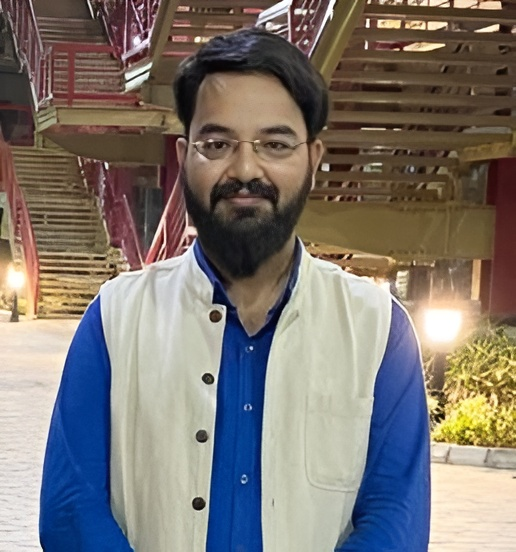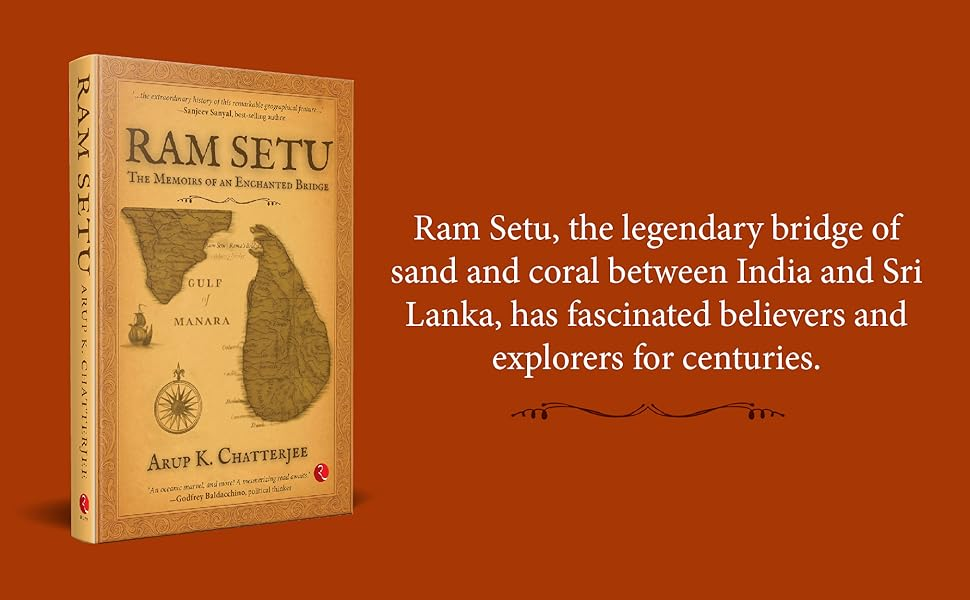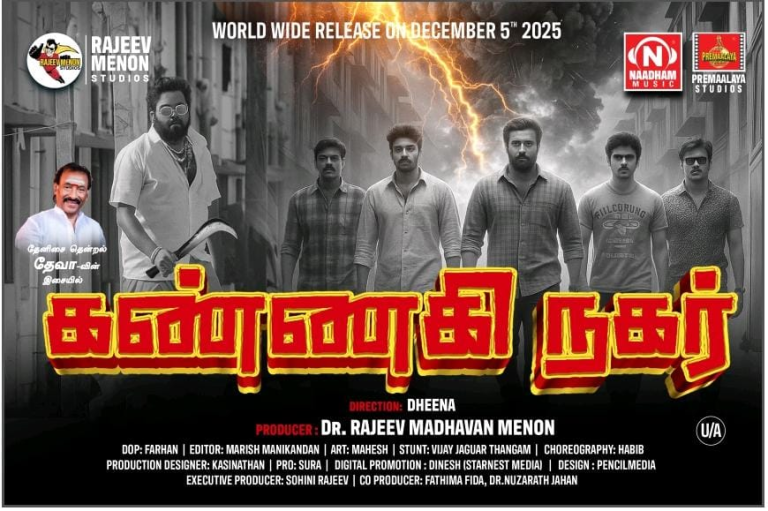In the vast and layered narrative of modern India, Arup K. Chatterjee stands as a literary and scholarly voice that bridges the past with the present, and myth with material history. A prolific author, cultural historian, and Professor of English at O.P. Jindal Global University, Chatterjee has carved a distinctive space in Indian and global scholarship through his explorations of large cultural formations—railways, migration, islands, and bridges as powerful lenses to interpret the Indian imagination.

His works speak to both academic and general audiences, unraveling how spaces and structures become repositories of memory, identity, and politics. From the railways that transformed the colonial landscape to the oceanic marvel known as Ram Setu, Chatterjee’s writing brings history alive with intellectual depth and narrative elegance.
A Scholar and Storyteller
Chatterjee began his career as a freelance journalist at The Telegraph in India before pursuing academic research at Jawaharlal Nehru University, where he completed his PhD at the Centre for English Studies. His doctoral work, Hillmaking: Architecture and Literature from the Doon Valley, laid the foundation for a career dedicated to examining how landscapes and infrastructures shape cultural identity.
In 2014, Chatterjee received the Charles Wallace India Trust Fellowship to the United Kingdom, further enriching his transnational scholarly perspective. Between 2011 and 2018, he served as the Chief Editor of Coldnoon: International Journal of Travel Writing & Travelling Cultures, a pioneering platform he founded to bring together global voices on travel and cultural narratives.
His commitment to scholarship is matched by an exceptional gift for communicating complex ideas in accessible, elegant prose. Over the years, Chatterjee has contributed more than thirty peer-reviewed papers and numerous essays and reviews to national and international publications.
Exploring India’s Cultural Landscape Through Books
Chatterjee’s literary journey is deeply intertwined with his intellectual preoccupations. His first major book, The Purveyors of Destiny: A Cultural Biography of the Indian Railways (2017), published by Bloomsbury Publishing, explored the Indian railways as more than a transportation network—it examined them as a symbol of colonial ambition, nationalist imagination, and cultural transformation. Revised and republished as The Great Indian Railways (2018), the book became a bestseller and an essential reference point for understanding how this vast infrastructural network shaped the modern Indian psyche.
Chatterjee followed this with Indians in London: From the Birth of the East India Company to Independent India (2021), a sweeping cultural and historical account of Indian migration to London from the colonial era to independence. This book explored the ways in which transnational movements, intellectual exchanges, and political struggles were inscribed in the imperial capital, making visible a centuries-long relationship between India and Britain.
With each work, Arup K.Chatterjee has mapped new terrains of cultural history—showing how spaces like railways and cities are not merely backdrops to history but active forces that shape identity, politics, and memory.

Ram Setu: Weaving Myth, History, and Environmental Memory
The culmination of years of research and storytelling, Chatterjee’s most recent work marks a major milestone in his career. His academic study Adam’s Bridge: Sacrality, Performance, and Heritage of an Oceanic Marvel (2024), published by Routledge, offers a meticulous transdisciplinary exploration of the formation known variously as Adam’s Bridge and Ram Setu. It delves into its sacral geography, colonial cartographies, geological debates, and its entanglement with contemporary politics.
Building on this rigorous scholarship, Chatterjee crafted a more public-facing narrative for a broader readership with Ram Setu: Memoirs of an Enchanted Bridge (2025), published by Rupa Publications. This book moves beyond academic discourse to tell the story of Ram Setu as a living cultural and environmental site.
Through vivid storytelling, Chatterjee invites readers into a narrative journey across myth, science, and politics. He foregrounds the voices of coastal communities who have lived with the bridge for generations—fishermen, temple custodians, environmental activists, and local historians. Their perspectives bring an immediacy and authenticity to the story, transforming Ram Setu from a subject of debate into a site of living heritage.
A Cultural Battleground and a Symbol of Identity
Ram Setu has long been a contested site where mythology, faith, science, and geopolitics converge. In Chatterjee’s hands, it becomes more than a point of controversy; it becomes a prism through which to understand India’s evolving relationship with its sacred landscapes.
The book traces how colonial cartographers mapped the tombolo, how modern-day scientists debate its origins, and how communities invoke it as a sacred site. It explores how environmental concerns, political narratives, and religious sentiments intersect in shaping its contemporary public life.
What makes this book stand out is its ability to hold myth and science together without privileging one over the other. Chatterjee treats Ram Setu as a cultural artifact in motion—shaped by stories, rituals, and ecological realities. This balanced and immersive approach has already begun to spark lively discussions in media, academic forums, and cultural circles.
An Intellectual Voice Resonating Across Fields
Chatterjee’s contribution goes beyond the written page. His books serve as bridges between academic research and public discourse, encouraging a deeper and more nuanced engagement with India’s cultural heritage. In Ram Setu: Memoirs of an Enchanted Bridge, he accomplishes something rare—he reanimates a legendary site in ways that appeal to historians, environmentalists, faith practitioners, and everyday readers alike.
For lovers of history, mythology, and environmental storytelling, this work offers a captivating blend of narrative beauty and intellectual depth. It invites readers to reflect on how landscapes and legends shape collective memory, identity, and belonging.
Reimagining India’s Heritage for a Global Audience
At a time when debates around heritage and faith are increasingly polarized, Chatterjee’s approach stands out for its clarity, respect for multiple viewpoints, and commitment to intellectual honesty. He brings together rigorous research and accessible storytelling, enabling Ram Setu to emerge not just as a cultural site, but as a living archive of India’s past and present.
His work has positioned him among a new generation of scholars and public intellectuals who bridge disciplinary divides and create meaningful conversations between history, mythology, ecology, and politics.
A Voice Shaping Cultural Conversations
Arup K. Chatterjee’s journey from journalism to academia and from scholarly research to bestselling books exemplifies a distinctive capacity to shape public thought while advancing academic discourse. His works on railways, migration, and bridges reveal how infrastructure and landscape are inseparable from cultural identity.
With Ram Setu: Memoirs of an Enchanted Bridge, he has created a narrative that speaks to India’s soul. It is a book that does not simply describe a structure—it illuminates the layered histories, beliefs, and environmental realities that surround it.
As conversations around Ram Setu continue to unfold in cultural and environmental circles, Chatterjee’s voice will remain central. His work urges readers to look beyond binaries and engage with heritage as a shared human story—dynamic, sacred, and deeply alive.
In doing so, Arup K. Chatterjee has not just written about India’s cultural formations; he has redefined how we read them.








